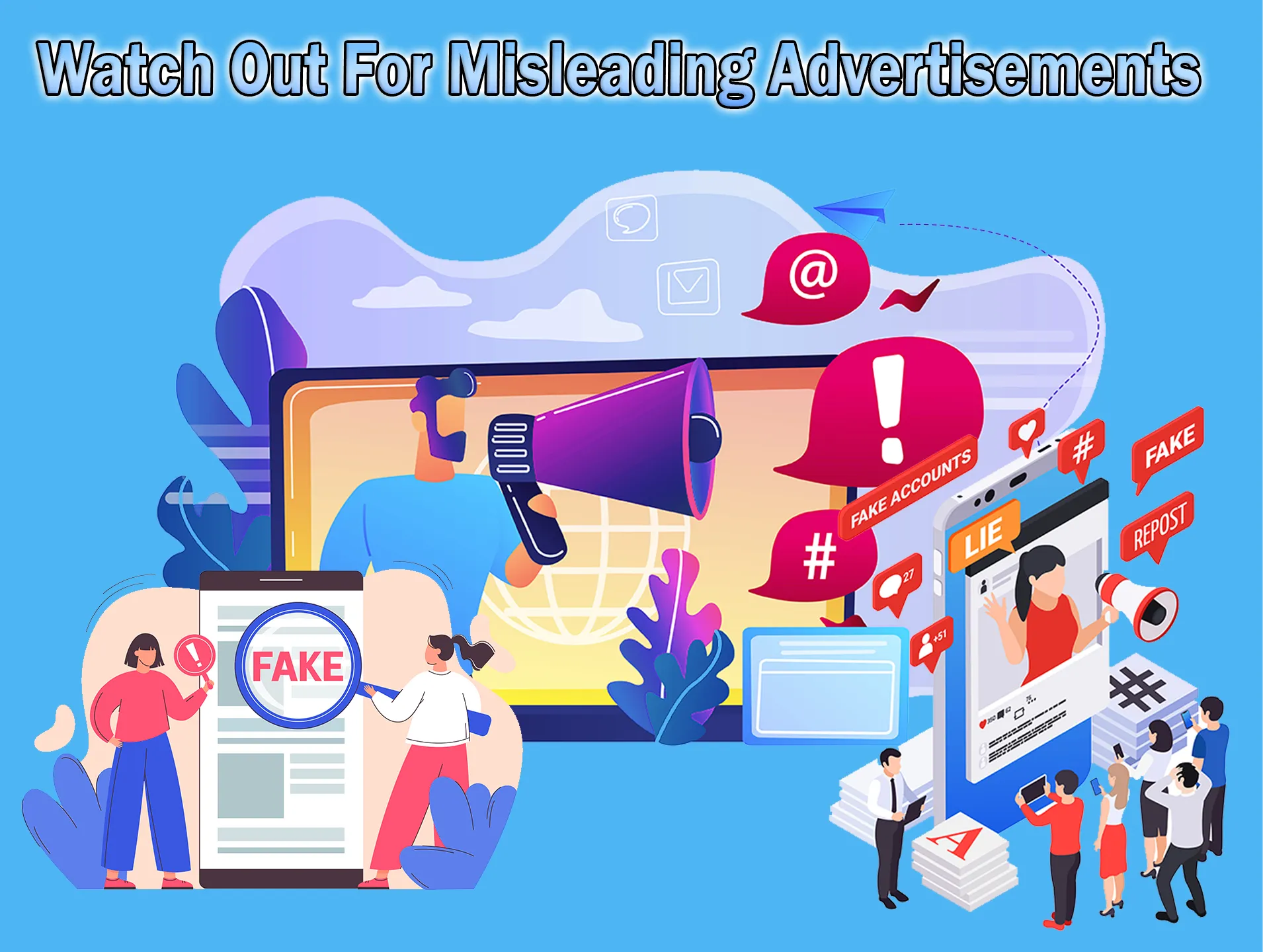Introduction:
In the era of modern technology and the rapid evolution of the internet, online shopping has become incredibly popular. With the increasing number of online stores and platforms, we see dozens or even hundreds of ads daily. It has become crucial to be smart in your shopping process to avoid being deceived by ads and ensure you are confidently purchasing the products you need. In this article, we will provide you with essential information, tips, and strategies on how to avoid falling for deceptive ads and become a savvy consumer when shopping online.
1- Understanding Why Ads Target You:
Have you ever wondered why ads for products you were just thinking about suddenly appear on Facebook, Instagram, YouTube, or other sites?
What you experience is not a coincidence, but the result of ad targeting strategies used on digital advertising platforms.
This type of advertising is known as social targeting or behavior-based advertising.
Every browsing habit and piece of personal data you register on these sites is analyzed by algorithms, which then present you with ads tailored to your interests and preferences.

2- The Hidden Goals Behind Ads
With the advancement of artificial intelligence, advertising methods have also evolved.
It has become easier for anyone in the world to reach you with a specific ad without your permission.
Consequently, you are more exposed to seeing false ads and offers aimed at draining your money.

Here are some common types of ads and their hidden objectives:
2.1- Targeted Ads:
– Hidden Goal:
- Increase product sales.
– Description:
- These ads use personal information about users, such as interests, online behavior, age, and geographic location, to display products that are more likely to interest them, thereby increasing the likelihood of a purchase.

2.2- Social Ads:
– Hidden Goal:
- Boost brand interaction and build loyalty.
– Description:
- These ads are posted on social media platforms, aiming to increase user engagement with the content, thereby fostering better relationships between the consumer and the brand.

2.3- Data-driven Ads:
– Hidden Goal:
- Analyze consumer behavior and enhance marketing strategies.
– Description:
- These ads rely on analyzing user data to help companies understand consumer behavior and adjust their marketing strategies accordingly.

2.4- Retargeting Ads:
– Hidden Goal:
- Re-target users who visited the site without making a purchase.
– Description:
- These ads follow users, showing them products they might be interested in based on their previous site visits.

2.5- Strategic Ads:
– Hidden Goal:
- Build the brand image.
– Description:
- These ads are used to reinforce the brand and increase awareness without the direct need for a purchase.

Ultimately, all these advertisements aim to capture consumer attention and motivate them to purchase or engage with the brand. This makes the ads highly targeted and effective for sellers first and foremost. As a buyer, these ads can only be beneficial if you’re smart and know how to handle them. Don’t be the type who is easily deceived and makes quick purchases.
3- Recognizing Deceptive Ads:
Understanding the types of deceptive ads you might encounter while browsing online is crucial:
3.1- Fake Ads:
- Description: Ads that appear to promote a well-known product or service but lead you to low-quality or counterfeit products.
3.2- False Offers:
- Description: Ads showcasing significant discounts on certain products, but the discount is not as substantial upon purchase.
3.3- Fake Reviews:
- Description: Some companies create fake reviews for their products to make them seem better than they actually are.

4- How to Avoid Falling for Deceptive Ads
- Be Cautious and Skeptical:
- When faced with an enticing offer or ad, be cautious and avoid making an immediate purchase. Reevaluate the offer and scrutinize it thoroughly for any suspicious elements or misleading information.
- Conduct Independent Research:
- If you find a product in an ad appealing, go directly to Google, search for the product’s official website, and compare the information there with the ad. This will help you get more accurate and detailed information.
- Use Search Engines Wisely:
- When searching for a specific product, use well-known search engines like Google, but avoid clicking on sponsored ads and focus on organic results.
- Enable Ad Blockers:
- Many web browsers offer the option to block ads. Activate this option to prevent annoying ads from displaying while you browse.
- Protect Your Privacy:
- Use a browser that respects your privacy and gives you control over the data collected about you. Regularly clear cookies.
- Read Carefully:
- When viewing an online ad, read it carefully and pay attention to the fine details. Sometimes, lackluster ads contain hidden terms and conditions you need to be aware of.
- Know the Source:
- Verify the source of the ad and the site you’re buying from. Some sites and stores are not trustworthy and lure customers with unrealistic offers.
- Read Reviews and Ratings:
- Customer reviews and ratings can be invaluable in understanding the quality of the product and customer service. Don’t ignore these valuable resources.
- Check Return Policies:
- Always be aware of the return policy for products before making a purchase. This is important if you are dissatisfied with the product after receiving it.
- Use Privacy Protection Tools:
- Protect your online privacy using tools like anti-malware software and ad blockers.
- Avoid Rushing:
- Don’t make hasty decisions when shopping online. Give yourself enough time to research and think before completing a purchase.
Conclusion

Smart online shopping requires a good understanding of how to handle advertisements and maximize the benefits of online shopping options. By following the tips and strategies mentioned above, you can save your money and time, avoid falling for deceptive ads, and ensure a safe and profitable online shopping experience. Always be cautious and conduct your research to avoid traps and achieve a safe and rewarding online shopping experience.












One comment
Grate poste